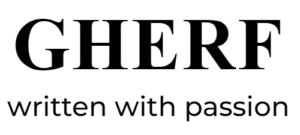What is a CV? What does CV stand for? Well, CV stands for “curriculum vitae,” which is a Latin phrase that translates to “course of life” in English. Do you need it? Yes! Do you know how to make it professional and how to convince people to hire you or to work with you based on your CV? If not, don’t worry, we got you! Here is what you need to know!
What is a CV?
A CV, short for curriculum vitae, is a document that provides a detailed summary of an individual’s academic and professional background. It is typically used when applying for academic positions, research opportunities, fellowships, or jobs in some industries.
A CV includes information such as:
1. Personal details: Name, contact information, and sometimes a photograph.
2. Professional summary or objective: A brief statement summarizing career goals or professional aspirations.
3. Education: Details about educational qualifications, including degrees, institutions, dates of attendance, and any relevant coursework or projects.
4. Work experience: Chronological list of previous employment, including job titles, company names, dates of employment, and a description of responsibilities and accomplishments.
5. Research experience: Details of research projects, publications, presentations, or conferences attended.
6. Skills: Relevant technical or professional skills, such as programming languages, laboratory techniques, or certifications.
7. Awards and honors: Recognition received for academic or professional achievements.
8. Publications and presentations: List of research papers, articles, or presentations made at conferences.
9. Professional affiliations: Membership in professional organizations or societies.
10. References: Contact information for individuals who can provide a recommendation or vouch for the applicant’s qualifications.
The content and structure of a CV can vary depending on the country, industry, or specific requirements of the application. Tailoring the CV to highlight the most relevant qualifications and experiences for the intended position is important.
What to NOT include in your CV?
While there are no strict rules about what should never be included in a CV, even if you use a CV maker tool, certain elements are generally considered unnecessary or may hinder the effectiveness of your CV. Here are some things you may want to avoid including:
1. Personal information: It is not necessary to include personal details such as your date of birth, marital status, gender, or nationality, unless specifically requested by the employer.
2. Irrelevant work experience: If you have a long work history, it’s generally recommended to focus on the most recent and relevant experiences. Including every job you’ve ever had, especially if they are unrelated to the position you’re applying for, can clutter your CV and distract from your qualifications.
3. Hobbies and interests: While it’s not inherently wrong to include hobbies and interests, they should only be included if they are relevant to the position or demonstrate valuable skills. Otherwise, it may not contribute much to your application.
4. Unrelated skills: Avoid listing skills that are not relevant to the position you’re applying for. Focus on skills that directly relate to the job requirements or showcase your expertise.
5. Excessive personal details: It’s important to maintain a professional tone in your CV. Avoid oversharing personal information or including overly personal anecdotes that are unrelated to your qualifications.
6. Unexplained gaps in employment: If you have gaps in your employment history, it’s generally advisable to address them briefly and honestly, focusing on any relevant activities or skills gained during those periods. Leaving unexplained gaps may raise questions for potential employers.
7. Negative information about previous employers: Your CV should maintain a positive and professional tone. Avoid including negative remarks or criticism about previous employers or colleagues.
Remember, the goal of a CV is to highlight your qualifications, experience, and skills relevant to the position you’re applying for. Tailor your CV to make it concise, informative, and focused on what will make you stand out as a strong candidate.
How to make your CV look professional?

It is really not so hard! To make your CV look professional, follow these guidelines:
1. Use a clean and professional format: Choose a clean and easily readable font (such as Arial, Calibri, or Times New Roman) and ensure consistent formatting throughout the document. Use bullet points and headings to organize information and make it easy to skim.
2. Keep it concise: Aim for a two-page CV, especially if you have limited work experience. Be selective and include only the most relevant and impactful information. Use concise and clear language to convey your qualifications and accomplishments.
3. Start with a strong summary or objective statement: Begin your CV with a brief summary or objective statement that highlights your key skills, experience, and career goals. This provides an overview of your profile and helps employers quickly understand your suitability for the position.
4. Structure it logically: Organize your CV in a logical and chronological manner. Start with personal details and contact information, followed by sections such as education, work experience, skills, and additional relevant sections (research experience, publications, etc.). Order these sections based on what is most relevant to the position you’re applying for.
5. Emphasize your achievements: Instead of just listing your job responsibilities, focus on highlighting your achievements and contributions in each role. Quantify your accomplishments when possible (e.g., “Increased sales by 20%,” “Managed a team of 10 employees,” etc.) to showcase your impact.
6. Tailor it to the position: Customize your CV for each job application by emphasizing the skills and experiences that are most relevant to the position. Analyze the job description and incorporate keywords or buzzwords used by the employer, while still maintaining honesty and accuracy.
7. Proofread carefully: Check your CV thoroughly for any spelling, grammar, or formatting errors. Typos and mistakes can create a negative impression and undermine your professionalism. Consider having someone else review it as well to catch any overlooked errors.
8. Use consistent and professional language: Write in a formal and professional tone. Avoid using jargon, slang, or overly complex language. Be clear, concise, and specific in your descriptions.
9. Include a professional email address: Ensure that the email address you provide is professional, using your name if possible. Avoid using unprofessional or irrelevant email addresses.
10. Use appropriate and relevant references: If the employer requests references, provide professional references who can speak to your skills and qualifications. Notify your references in advance and ensure they are willing to vouch for your abilities.
By following these tips, you can create a professional-looking CV that effectively showcases your qualifications and increases your chances of impressing potential employers.
How to convince people to hire you by your CV?

Easier than you think! To convince people to hire you based on your CV, it’s important to present your qualifications, skills, and experience in a compelling and persuasive manner. Here are some strategies to make your CV more convincing:
1. Tailor your CV to the job: Customize your CV for each position you apply to. Carefully review the job description and requirements, and highlight the skills, experiences, and achievements that align with the needs of the employer. Show how your qualifications make you an ideal fit for the role.
2. Showcase your accomplishments: Instead of merely listing your job responsibilities, emphasize your achievements and the impact you made in previous roles. Use quantifiable metrics whenever possible to demonstrate results (e.g., “Increased sales by 20%,” “Reduced costs by 30%,” “Led a successful project that resulted in a 50% increase in productivity”). Highlight specific examples that illustrate your skills and expertise.
3. Focus on relevant skills: Highlight the skills that are most relevant to the position you’re applying for. Tailor the skills section of your CV to include those mentioned in the job description. Use specific examples to demonstrate how you have successfully applied those skills in previous roles.
4. Use action verbs: Begin each bullet point in your work experience section with strong action verbs to make your accomplishments more impactful. Words such as “achieved,” “led,” “implemented,” “innovated,” “collaborated,” and “solved” can add strength and dynamism to your statements.
5. Demonstrate continuous learning: Showcase your commitment to personal and professional development. Include relevant certifications, training programs, workshops, or courses you have completed that enhance your qualifications for the position. Highlight any ongoing learning initiatives or professional memberships.
6. Include relevant keywords: Incorporate industry-specific keywords and phrases from the job description in your CV. Many employers use applicant tracking systems (ATS) to scan and filter CVs based on keyword matches. Including relevant keywords can increase the likelihood of your CV being selected for further consideration.
7. Provide evidence: Whenever possible, provide evidence to support your claims. For example, if you state that you have excellent leadership skills, mention any instances where you successfully led a team or project. Providing concrete examples and results adds credibility to your statements.
8. Keep it concise and organized: A cluttered and lengthy CV can make it difficult for hiring managers to quickly grasp your qualifications. Keep your CV concise, focusing on the most important and relevant information. Use clear headings, bullet points, and formatting to make it easy to read and navigate.
9. Proofread and edit: Ensure your CV is error-free by carefully proofreading it. Typos, grammatical mistakes, or formatting issues can create a negative impression. Ask someone else to review your CV as well, as they may catch errors you missed.
10. Professional presentation: Pay attention to the visual presentation of your CV. Use a clean and professional design, consistent formatting, and a legible font. Ensure that the document is well-structured and visually appealing.
By implementing these strategies, you can create a compelling and convincing CV that effectively communicates your qualifications and persuades potential employers to consider you for the position.
How to write a CV template

Here’s a basic CV template that you can use as a starting point. Remember to customize it according to your own qualifications, experiences, and the specific requirements of the job you’re applying for.
[Your Name] [Contact Information: Address, Phone Number, Email]
[Professional Summary/Objective] [Write a concise statement summarizing your career goals and key qualifications.]
[Education] [List your educational background, starting with the most recent.]
[Degree Name], [Field of Study] [University Name], [Location] [Year of Graduation]
[Work Experience] [List your work experience in reverse chronological order, including job titles, company names, dates of employment, and a description of your responsibilities and accomplishments in each role.]
[Job Title] [Company Name], [Location] [Dates of Employment]
• [Responsibility 1]
• [Accomplishment or result achieved]
• [Accomplishment or result achieved]
• [Responsibility 2]
• [Accomplishment or result achieved]
• [Accomplishment or result achieved]
[Job Title] [Company Name], [Location] [Dates of Employment]
• [Responsibility 1]
• [Accomplishment or result achieved]
• [Accomplishment or result achieved]
• [Responsibility 2]
• [Accomplishment or result achieved]
• [Accomplishment or result achieved]
[Skills] [List relevant skills that are applicable to the position you’re applying for. Include technical skills, software proficiency, languages, and any other skills that are relevant to the job.]
• [Skill 1]
• [Skill 2]
• [Skill 3]
[Additional Sections] [Include any additional sections that strengthen your candidacy. This may include research experience, publications, presentations, awards, certifications, or professional affiliations.]
[References] [Indicate whether references are available upon request, or provide the contact details of references if requested.]
Remember, this template is just a starting point. Feel free to customize and expand upon it to best showcase your qualifications and experiences. Pay attention to formatting, ensuring that it looks clean, professional, and easy to read.
So, as you can see, a CV can help you more than you thaught! It is not hard to do it, and you can make it look professional very quick!
Do you want to read more interesing and helpful articles like that? No problem, check our website for more!

